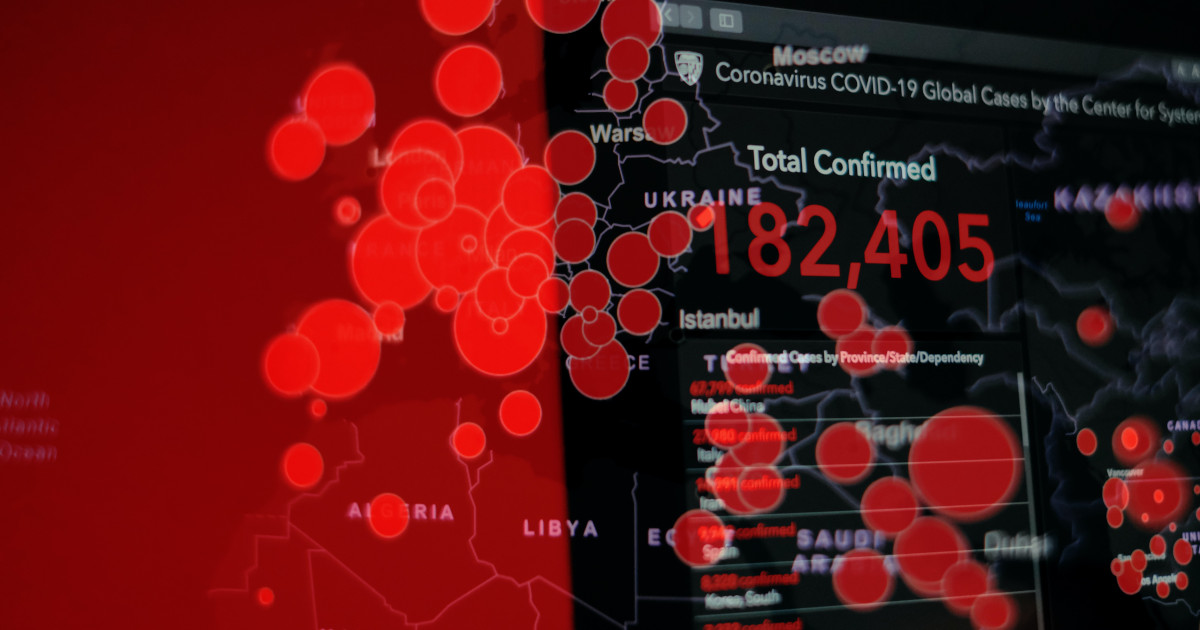
CDC Violated Law to Inflate COVID Cases and Fatalities
Over-reporting of fatalities was enabled by a March 2020 change in how cause of death is reported on death certificates. Rather than listing COVID-19 as a contributing cause in cases where people died from other underlying conditions, it was to be listed as the primary cause.
April 18, 2021 | Source: Mercola.com | by Dr. Joseph Mercola
In this interview, Dr. Henry Ealy, ND, BCHN, better known as Dr. Henele, a certified holistic nutritionist and founder/executive community director of the Energetic Health Institute,1 reviews how U.S. federal regulatory agencies have manipulated COVID-19 statistics to control the pandemic narrative.
He earned his doctorate in naturopathic medicine from SCNM. After graduating from UCLA with a bachelor of science in mechanical engineering, he worked for a major aerospace company as a primary database developer for the International Space Station program.
He holds over 20 years of teaching and clinical experience and was the first naturopathic doctor to regularly teach at a major university in the U.S., when he headed up a program at Arizona State University on bioanxiety management.
As he points out, he’s an avid data collector. In October 2020, Henele and a team of other investigators published a paper2 in Science, Public Health Policy and the Law, titled, “COVID-19 Data Collection, Comorbidity & Federal Law: A Historical Retrospective,” which details how the U.S. Centers for Disease Control and Prevention has enabled the corruption of case- and fatality-reporting data in violation of federal law.
Accuracy of Data Is Paramount for Public Health Policies
The team started looking at CDC data on COVID-19 cases and fatalities in mid-March 2020. He explains:
What I started doing on March 12 was going through all the data we could find from the Italian Ministry of Health and South Korea. We couldn’t validate any of the data coming out of China. There was just no independent way to do it. What we were seeing out of Italy and South Korea was that we were going to be concerned about people who are over 60, over 70 years of age with preexisting conditions.
That was the main thing coming out of that data. So, we were expecting the same kind of trends here … I started tracking the data on a daily basis from each state health department, and then making sure that what the CDC was reporting was matching up.
What we started to see, very early on, were some significant anomalies between what the states were reporting and what the CDC was saying. It was concerning, because the variance was growing with each day. We have an old saying: ‘Garbage in equals garbage out.’ And that was the concern, because we knew public health policies are going to be based upon the data, so accuracy is of paramount importance.
Then we started delving in a little deeper into how the CDC was supposedly collecting their data. That’s where we saw the National Vital Statistics Systems (NVSS) March 24 guidelines, which were very concerning, and we saw the CDC adopt the Council for State and Territorial Epidemiologists paper on April 14.
What was incredibly concerning about this was that it was all done without any federal oversight, and it was all done without any public comment, especially scientific comment. That became increasingly problematic. We started to see discrepancies in the state of New York alone, in the thousands of fatalities.
Special Rules for COVID-19 Fatalities Were Implemented
Importantly, in March 2020, there was a significant change made to the definition of what a COVID-19 fatality was. As explained by Henele, there’s a handbook on death reporting, which has been in use since 2003. There are two key sections on a death certificate. In the first part, the cause of death is detailed. In the second part, contributing factors are listed.
Contributing factors are not necessarily statistically recorded. It’s the first part, the actual cause of death, that is most important for statistical accounting. March 24, 2020, the NVSS updated its guidelines on how to report and track COVID-19-related deaths. Henele explains:
They were saying that COVID-19 should be listed in Part 1 for statistical tracking, but [only] in cases where it is proven to have caused death, or was assumed to have caused death.
What was really concerning about this document was that it specifically stated that any preexisting conditions should be moved from Part 1, where it has been put for 17 years, into Part 2.
So, it was basically taking this and saying, ‘We’re going to create exclusive rules for COVID-19 and we’re going to do a 180 for this single disease …’ The big problem with that is that now you remove the ability for a medical examiner, a coroner, a physician, to interpret [the cause of death] based upon the collective health history of that patient …
You remove their expertise, and you say, ‘You have to count this as COVID-19.’ That takes on an added measure when you incentivize it financially, and that’s what we saw with some of the Medicare and Medicaid payouts …
